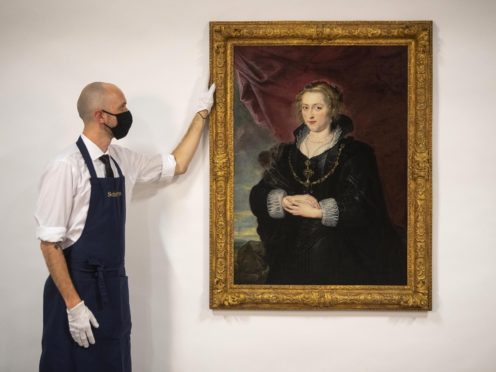A portrait that had gathered dust in a family collection for almost 140 years could make £3.5 million at auction after it was discovered to be a Rubens.
The origins of Portrait Of A Lady were revealed when layers of dirt and varnish were removed, and it will go under the hammer at Sotheby’s in London, with a £2.5 million to £3.5 million estimate.
The 17th century masterpiece was exhibited at the Royal Academy in London in 1902 as a work by Rubens, but Andrew Fletcher, Sotheby’s head of department for Old Master paintings, said its origins had been “forgotten about”.
After remaining in one family collection for 139 years, it was sold for £78,000 in 2017.

It was catalogued during the sale as being from the workshop of Rubens, meaning it was thought to have been painted by one of the his assistants, possibly overseen by the Old Master himself.
An anonymous buyer – who is now selling the work – had a hope it was the real thing so he snapped up the painting and took it to Sotheby’s for experts to take a look.
“It was quite dirty, with hundred years of dirt and old varnish on it” but when it was cleaned “this rather wonderful Rubens was revealed”, Mr Fletcher said.
“It’s one of those moments that you have a couple of times a year when you walk in, and you just have this wonderful instant reaction of glee,” he said.
Some “hidden details” were brought out with an infrared camera.
“One of the things which helps prove the originality of a painting, as opposed to it being a slavish copy,” is examples of the artist making changes while painting, he said.
“There is one enormous change in the sky where the red curtain descended… Rubens obviously wasn’t happy with that so pushed it back up and included more sky.
“And to the contour of her dress, you can see that he painted it one way first and then… he’s broadened her shoulders and the contour of her dress.
“And in a more minor way you can see lots of little changes in his painting of the fingers and hands.”
He said the portrait, which depicts a young woman in a black dress and cloak, is “very majestic”.
“She’s got such a wonderful presence. I love the way she’s looking out slightly out the corner of her eye with a little bit of a grin.
“There’s a real sense of character to her face even though she’s actually posed in quite a formal way.”
The painting will be offered for auction at Sotheby’s on July 29, the first major evening sale in London since lockdown.
